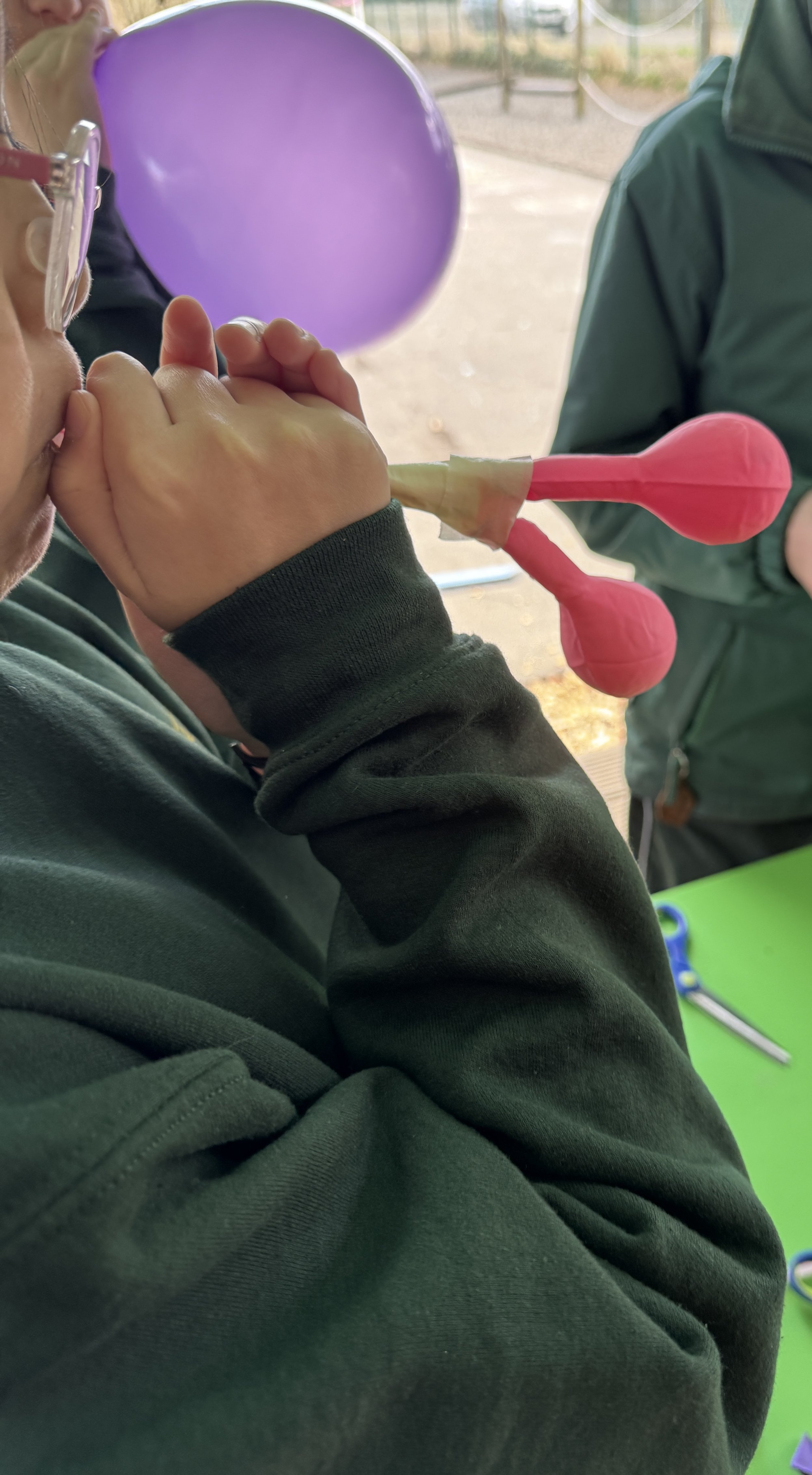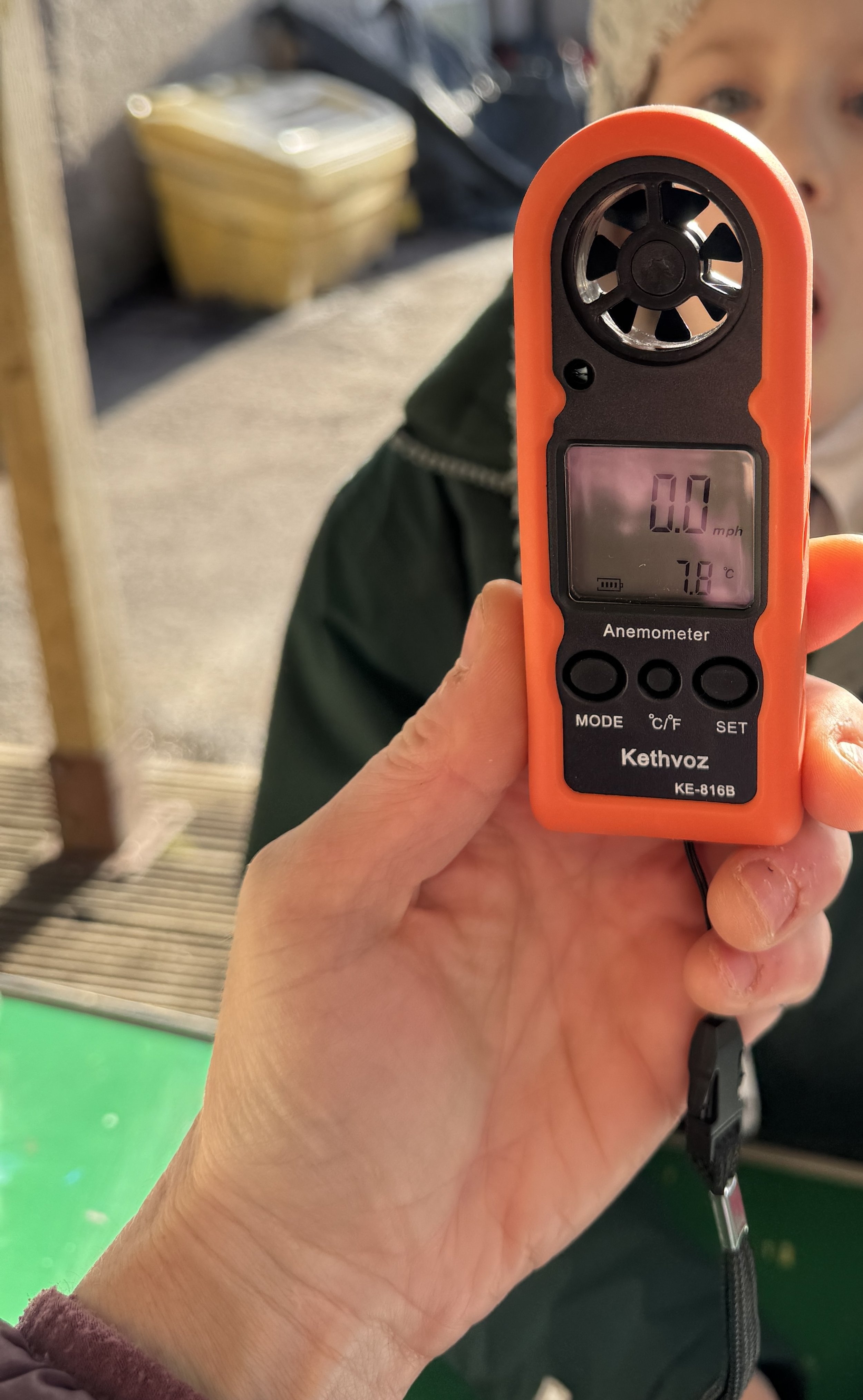Our bodies & winning competitions…
This term we have been lucky enough to win two competitions for our outdoor learning work. The first was from The Tree council. We won by explaining our ongoing action to improve the biodiversity of our school grounds, manage use sustainably, identify species we find and make our own resources from scrap wood. As a result, we won six fruit trees to plant an orchard in our field. We decided to plant them next to the native trees we planted a few years ago from the Woodland Trust (://youngtreechampions.org/club-space/ ).
Secondly, we won Earth Hour 2025. For this, we explained, by learning outdoors we: reduce use of electricity (lights, computers etc); cook using fire; create learning resources from repurposed items rather than buy new; grow crops and plant trees.
As an example, we gave detail of our P2/3 outdoor learning session about farms.
Having visited an arable and livestock farm with RHET on the Tuesday, the children spent all day outdoors extending their learning, on the Thursday. First, we discussed the animals and crops the children had identified on Tuesday. Luckily, one crop was wheat. We therefore: tried to create our own flour from wheat grains; planted a wheat and potato crop in the polytunnel; made a scarecrow to protect the crops and prepared some dough (not our flour - we had about 2mm) to cook bread on the fire in the afternoon. In the afternoon, we discussed different species of fruit that grow in the UK, some of which grow on trees. This linked well with the need to plant our fruit trees. The children did a taste test of different varieties of apple and pear. We then planted the trees and finished the day cooking our bread on the fire!









Bodies this term started with Bones and Skeletons in Primary 6. The first challenge (without explaining why) was to try to raise a tennis ball as high off the table as you can using 10 sheets of paper and nothing else….. Eventually, most groups realised that tubes were strongest. This then led us into a discussion about bones why we have them and what they are like (tubes). We created our own skeletons (not all the bones) using straws and wire. Next, we explored real animal bones looking at sheep’s skulls and owl pellets..







P5 & P7 were both exploring Lungs. P5 made a single lung model to understand the significance of the diaphragm. They tested their lung strength and capacity. We also explored how we can control our breathing and use mindfulness.
P7 made a full lung model (2 lungs and very tricky). For enterprise, they were making their own perfumes (linking well with the lavender bags they made for the Christmas fair). We therefore, also, explored plants that are used in perfume and our sense of smell.






P3/4 were outside all day. First, we took them down to the river to sail their boats (that they made last term). During the walk we tested our senses and bodies. We listened, tested our proprioception with the peg game and looked (visual) for key artefacts around Crieff (with a picture hunt). On return we undertook a range of challenges in the school grounds. We completed a blindfold walk, tested our dexterity, speed, balance and jumping skills.





P7 were back out again with me. This time to explore the heart and blood vessels. We played the heart circulation game, this explained the role of the heart and blood vessels in moving gases (oxygen and carbon dioxide), food and waste around the body. Next, we made a model of our blood (red cells, platelets, white cells and plasma). We create a model of the heart, to show how blood is pushed and pulled around the body with the muscle of the heart. Next, we tried to ‘beat the heart’ by moving 5 litres of water using a 80ml cup in a minute. This is roughly, the amount the heart pumps, with each beat, in a minute. We listened to our heart beats and that of our classmates and finally explored and dissected a real sheep’s heart (finding the aorta and vena cava.







Last but not least, P1/2 were also exploring the senses and maths (positional language and addition) using Mazes and noughts & crosses. For our senses, we looked and tasted apples, listened playing Simon says and a blindfold magnet hunt, touched to identify hidden numbers and smelled herbs and spices to identify them. Finally, P2 helped me plant the last of the fruit trees.












